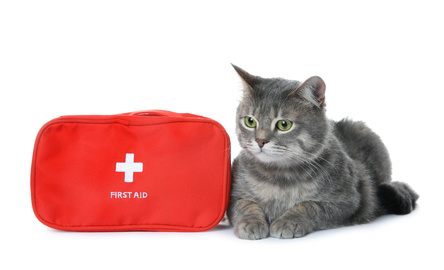Emergencies can happen any time and—while many people are prepared for their human household members—it’s important to make sure your pet is included in your emergency plan, too! This June, help celebrate National Pet Preparedness Month by checking that you’re well-prepared not only to save yourself during an emergency, but also your furry best friend!
Have an emergency plan:
One of the biggest ways to help your animals in an emergency is to make sure they’re included in your household’s emergency plan. If you’re not sure how to include them, here are some suggestions:
- Make sure your emergency contact knows your pet (or pets) and what to do if you are unable to get to or care for your pets during an emergency situation. For many households, an emergency contact is often a nearby neighbor, friend, or family member.
- Keep your emergency pet supplies with your household’s emergency kit for easy access and in case you need to leave your residence quickly. It also recommended to keep some pet supplies in your car, in case you are unable to access the emergency supplies in your home. (Stay tuned for our next blog post for suggestions about what supplies to include.)
- If you decide to leave the area or your home, avoid leaving your pet behind. Remember, if the area or your home is not safe for you, then it’s not safe for your pet.
- Emergency stickers are great ways to tell rescue and emergency personnel how many pets (and what type) are in your home. The ASPCA has stickers you can order on their website. They recommend sticking it in a place easily seen (on a door or in a window).
- Be sure to keep both a paper and digital list of your emergency contacts and resources.The paper copy is useful if you lose electricity or your electronics lose battery and you need a phone number or an address.
Plan to reunite:
Often in emergency situations, pets can get scared and escape into your neighborhood. Following the suggestions below can help you locate your pet if you get separated:
- It’s important to make sure your pet is microchipped and that information is up to date with your current address and phone number. You can also include a contact name and phone number for someone outside of your household, in case you are unable to pick up your pet in an emergency.
- Many experts suggest having current photo of your pets (both digital and printed) in case you need to create lost fliers or need to help identifying your pet. Additionally, if you’re in the photo with your pet, it can help establish ownership in case there is confusion with other pets in the area. Writing down identifying characteristics can also help.
Know your emergency services:
In case of injuries or damaged property, it’s good to know what emergency services are near you:
- Talk with your vet to know how they can be of assistance during an emergency; they may also have more information on how to prepare for your specific pet’s needs.
- In addition to knowing how your vet is helpful during an emergency, make a list of local pet hospitals that can assist with injuries or other medical issues. Mark which ones are 24 hours in case something happens during non-business hours.
- If you’re unable to stay in your home and need to house your pet temporarily, it’s good to have a list of local pet boarding businesses.




